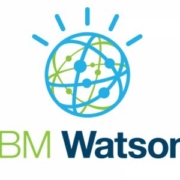What Next? Six Trends for the Print Industry in 2018
By Louella Fernandes on December 13, 2017
Articles, Artificial Intelligence, Channel, Digital Transformation, Trends
Changing customer preferences, increased mobility, tightening regulation and technological change are reshaping the print industry. As such, 2017 was a year of mixed fortunes for global manufacturers. Market consolidation has seen HP, Xerox and Lexmark reform and refocus on their traditional print business while vendors such as Konica Minolta, Ricoh and Sharp continue to expand their IT services capabilities. One thing that all vendors have in common, however, is a strategy focused on driving relevance of print technology and services in the ‘future workplace’. So what are the trends that offer manufacturers the best chance of seeing their strategies successfully come to fruition in 2018?
In an industry where the model has changed little over several decades, print manufacturers face a difficult balancing act. While profits will continue to flow from traditional products and services in the near term, manufacturers cannot bank on this sustaining indefinitely. This means they need to develop new capabilities and shift resources away from currently successful business models.
To get ahead of the inevitable disruption, print vendors must make strategic moves now to exploit the following trends that will be key to success in 2018:
- The rise of intelligent connected multi-function printers (MFPs) will help vendors capture more mindshare amongst SMBs. Smart MFPs will provide more opportunities to help SMBs improve productivity and efficiency, ushering in enhancements that will benefit both manufacturers and end users. These relate not only to proactive service features such as failure prediction and reducing the frequency of unscheduled downtime, but also to integrated workflow apps that can simplify the move from paper-based to digital processes.
- Major players will be forced to deepen software competencies. Print manufacturers must learn from other tech vendors, which focus on differentiating themselves through software innovation and speed to market rather than just hardware. Tightly controlled stand-alone product design is no longer feasible. As businesses seek to accelerate the digitisation of paper-based processes, software expertise will become one of the most important differentiators for the print industry. With innovation and product value increasingly defined by software, manufacturers need to align their skills and processes to address new challenges like cybersecurity and data privacy while developing new capabilities in areas such as digital workflow and augmented reality (AR) for print.
- New technology partnerships will emerge. As networked printers and MFPs increasingly become part of the connected world, print manufacturers will have no choice but to participate in mobility ecosystems. Expect to see some leading print vendors starting to leverage a broader and more diverse ecosystem of partners to secure innovative technologies for products, business models and sales channels. Konica Minolta has already made steps in this direction by partnering with Hewlett Packard Enterprise and other technology vendors for its Workplace Hub Pro platform.
- Predictive analytics will come to the forefront. Big data is nothing new to the print industry – manufacturers, channel partners and ISVs have long used data to support proactive service and maintenance to drive efficiency for customers. However, this is just the tip of the iceberg. Expect to see leading vendors better apply predictive analytics, using a range of techniques including data mining, modelling and artificial intelligence, to their products and services.
- Machine learning models for cybersecurity will emerge as a new differentiator. Leading vendors will start to invest more in machine learning to better protect print devices. As printers become more connected they also become more vulnerable to cyber-attacks. Protecting today’s print environment is challenging due to its complexity, which leads to a broader attack surface, and the use of unsafe legacy and outdated technologies. Today the key defence against attacks is authentication and intrusion detection. However, these are not a panacea for print security: rules-based intrusion detection will not detect all emerging threats, for example. The risk can be mitigated through machine learning algorithms and anomaly detection, which enable threats to be detected in real time. Among early adopters, some print security-relevant capabilities should start appearing in 2018.
- Advancements in voice recognition will trickle through.While virtual voice assistants for printers are still nascent, concepts are available from Nuance and Sharp. Sharp recently announced the integration of its MFPs with Amazon’s Alexa for Business, a virtual assistant that connects Amazon Echo devices to the enterprise. It is early days for Alexa for Business, which was launched at the end of November 2017, and while it promises to boost productivity in the office there are inherent security concerns to overcome. Nuance’s Voice Biometrics offers robust authentication, and it will be interesting to see if major players in the market accelerate initiatives in this area in 2018.
In a rapidly evolving technology landscape, major print industry players must be nimble if they are to successfully navigate the next few years. In a traditional industry characterised by long product cycles and deep capital investments, collaboration with high tech companies will be essential to drive innovation. If leading vendors in the market can pick up speed on taking advantage of the above trends, 2018 promises to be an exciting year for the print industry and its continuing journey to reinvention.











